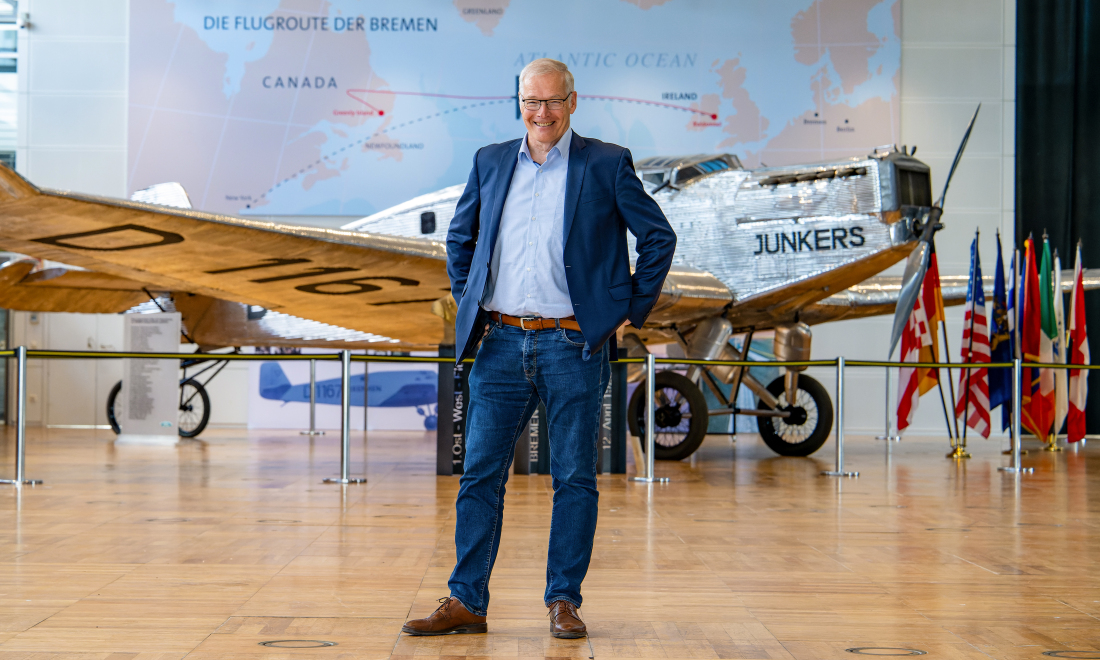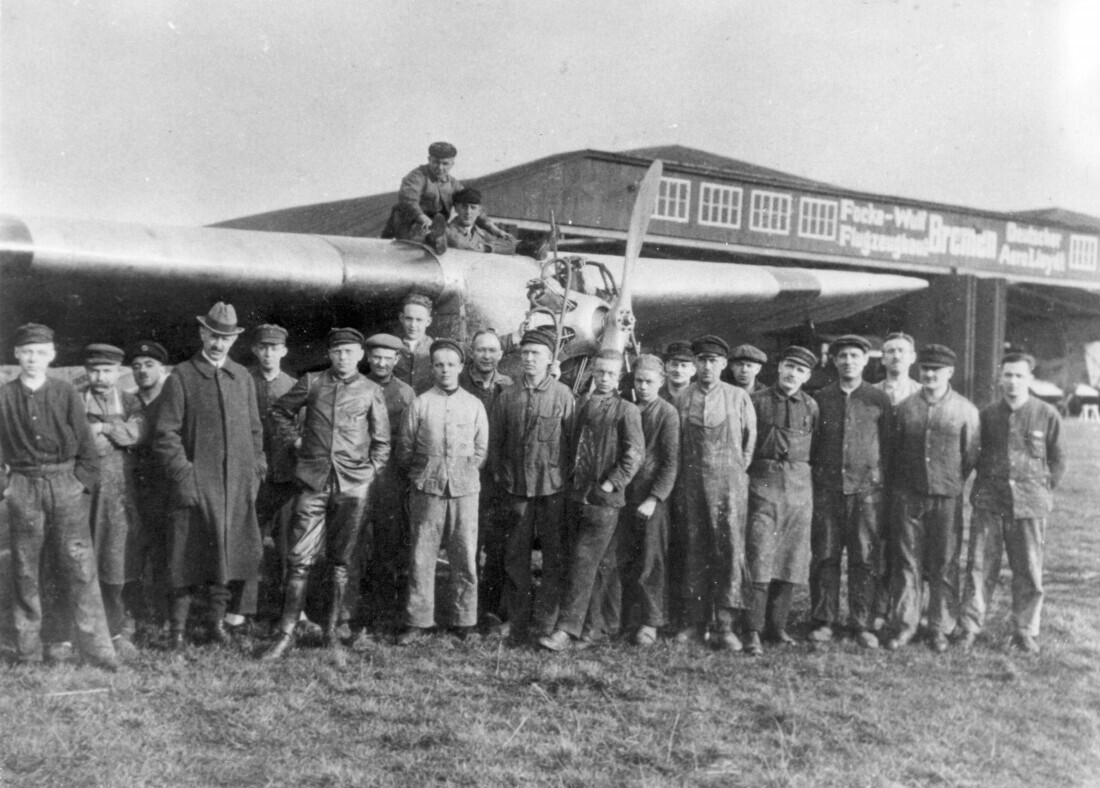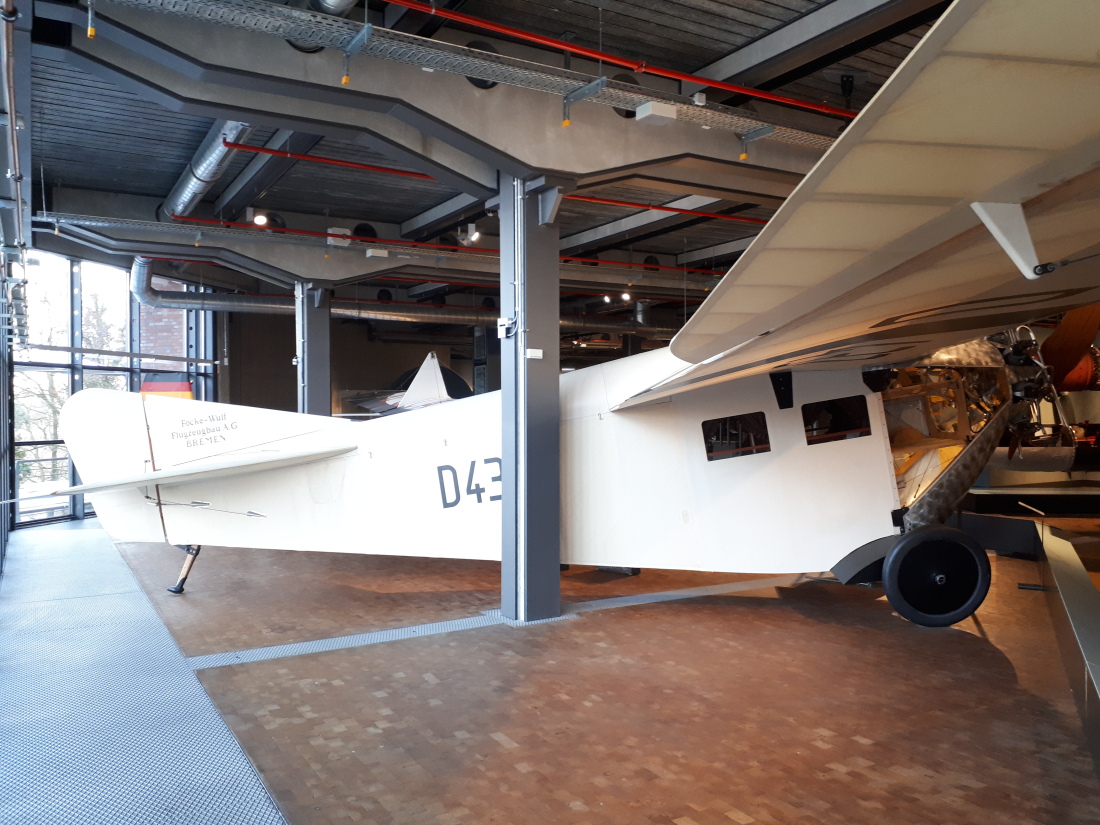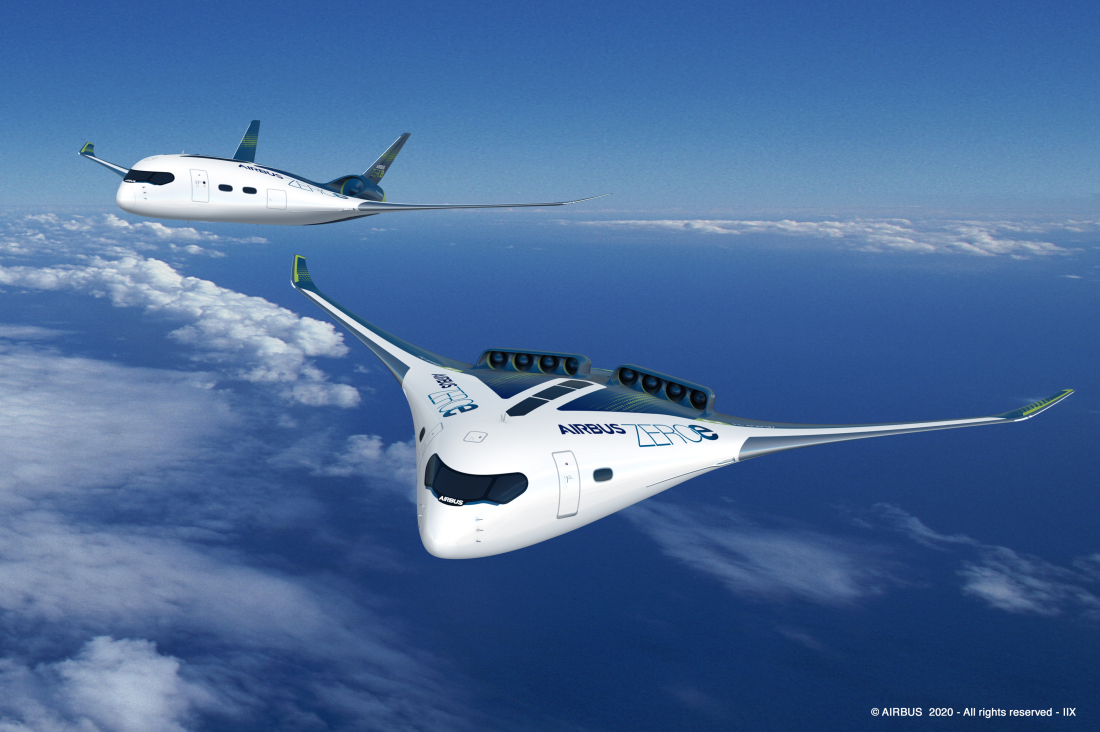Why Aircraft Designers Are so Interested in Starfish
AerospaceBremen's history as an aviation city began just over a century ago, with the Focke Wulf A 16
The "Focke Wulf A 16" was the first industrially produced aeroplane. It was "made in Bremen", triggering the city's rise to becoming one of Europe's leading aircraft manufacturing centres. Even today, pioneering endeavours like this are still taking place in the Hanseatic city of Bremen. Even starfish have their role to play.

The flying machine that rolled out of a hanger on the outskirts of Bremen on the 23rd of January 1924 really did look rather unusual. It was small and stubby. It had a "fat nose" and a fuselage that was almost covered by its outstretched wings. It was quite different from the slim, delicate-looking aircraft that were more common at the time. In addition to the pilot, there was room for three passengers inside the wooden-framed, fabric-covered craft. Its debut heralded a new era: according to Professor Rolf Henke, an aviation expert and strategy consultant in Bremen, "as the first aircraft to be built by a Bremen-based company, the Focke Wulf A 16 marked the start of a century of aircraft construction in the Hanseatic city".
The spirit of the aviation pioneers can still be found in the DNA of the Airbus group today
Henrich Focke and Georg Wulf, who were the pioneers of air travel in Bremen, had been friends since their early days. Aged only 20, the engineering student Focke started experimenting with model aircraft in 1910. His inventions so inspired Wulf, who was five years his junior, that Wulf dropped out of school to go and work for Focke. A mere two years later, the two pioneers had their first airworthy "Eindecker" monoplane, which Wulf flew. In 1923 they laid the foundation stone of their own production facility in Bremen and founded their company, Focke Wulf Flugzeugbau AG, in January 1924.
Traces of this story can still be seen in the Weserflug and Vereinigte Flugzeug Werke VFW companies and in the Entwicklungsring Nord (ERNO), and there's even part of Focke Wulf to be found in Airbus, the European aircraft manufacturer. Figures provided by Bremen's Senator for Economic Affairs show that the aviation and aerospace industry in Bremen employs around 12,000 people in more than 140 companies and 20 institutes. When compared with the total number of inhabitants, this means Bremen has the highest per capita involvement in aerospace and aviation in Germany.

The former Focke Wulf Flugzeugbau AG site is now home to Airbus production
By siting its second-largest plant in Germany in Bremen, Airbus plays a significant role in the city's aviation and aerospace industries. The group's 4,500-strong workforce manufactures landing flaps for all Airbus's commercial models at the former Focke Wulf Flugzeugbau AG site in Bremen. This is also where hydraulic and electronic components are added to the wings of A330 and A350 long-haul craft, which are built in Great Britain before being finished there. Last but not least, the entire fuselage of the A 400 M military transport plane is also built there.
Bremen's importance to Airbus, as a location, is highlighted by the fact that the group has chosen the city as the focus for its pan-European development activities, especially in the areas of "Materials and Processes" and "Flight Physics". "After one hundred years, our colleagues here in Bremen are still at the forefront of innovation and are making valuable contributions to the future of aviation and space flight", said Michael Kalbow, Head of Plant and Site at Airbus, Bremen. "We are extremely proud of this and are keenly looking forward to the next century." Bremen will celebrate the anniversary of "100 Years of Aircraft Construction" in 2024 by running a multitude of activities and events.
Setting records with the world's first helicopter
The pioneering spirit that inspired Focke and Wulf is alive and well in the aviation and aerospace industries in Bremen today. Georg Wulf died in 1927 in the crash that brought the test flight of his F 19 "Ente" (duck) prototype to an untimely end. However, Focke was undeterred and continued their work. After the National Socialist regime forced him to leave the company he had founded, Henrich Focke turned his attention to developing rotary wing aircraft. In the mid-1930s, Focke unveiled the Fw61, the world's first helicopter worth of the name. It set a wealth of world records at the first go.

How the sector is addressing issues of efficiency and digitisation
Today's researchers and developers in the aviation city of Bremen are looking as far into the future as ever. As neatly summarised by Professor Henke, "we're involved with all the issues of the future such as efficiency, autonomous flight, the use of drones and digitisation". Experts agree that the wealth and breadth of skills and expertise Bremen offers makes it an ideal location. Airbus has concentrated its major research projects in Bremen and a myriad of small businesses and start-ups are working busily on finding innovative solutions for complex issues. These include research institutes such as the IFAM and the German Aerospace Center (DLR).
Its facilities include the Virtual Product House (VPH) and many more. It's not just the detailed aspects of digitisation in aircraft manufacturing that are being investigated here. As Rolf Henke said about the VPH, which was set up while he was the Aviation Executive of the DLR, "at the centre is the way that we look at an aircraft as a whole, from its development right through to its disassembly at the end of its life cycle".
Nature as the inspiration for wing technology
Among the leading teaching, research and development institutions is the Bremen City University of Applied Sciences (Hochschule Bremen), which is closely involved with topics such as aerospace technologies, aviation and aerospace technology, aviation systems technology and management. The Bionics department is currently running what, at first glance, might appear to be a very unusual project. Professor Jan-Henning Dirks and his team are convinced that starfish can be the role models for new cost-cutting technology for building aircraft. Starfish have the quite astounding ability to stiffen their otherwise soft and flexible arms to such an extent that it's almost impossible to change their new shape, even by force, and all this in a fraction of a second.
This ability is just what's needed to help the shape of an aircraft's wings adapt to the differing challenges of take off, landing and flying, said Dirks. "The control systems that are currently in use, such as the technology in landing flaps, are some of an aircraft's most complicated components ", explained Jan-Henning Dirks when presenting his starfish project to the maritime industry in Bremen. He is convinced that replicating this particular ability of starfish as a technology could simplify aircraft wing design by several magnitudes. Dirks was already able to show his guests an artificial starfish that had comparable abilities.

"Commercial and scientific expertise in every transport sector"
For Professor Henke, the fact that the maritime industry in Bremen is also so interested in topics from the aviation sector is another indicator of Bremen's exceptional potential, a century after the start of industrial aircraft manufacturing on the banks of the Weser. "We have commercial and scientific expertise in every major transport sector, so we are able to fully engage with any issue involving transport, no matter what it is."
In Henke's view, one of the biggest challenges is how to improve the efficiency of aircraft and reduce their emissions. In Bremen, Airbus engineers are already making significant contributions to this global market leader's next-but-one generation of commercial aircraft. Interestingly, with its "fat nose" and wings that cover almost all of its fuselage, the first designs for this flying machine of the future bear an uncanny resemblance to the Focke Wulf A16, which was where it all began, one hundred years ago, in Bremen.
Success Stories
The history of space travel in Bremen
Small circle, big impact: With the founding of the “Development Ring North” (ERNO) in July 1961, Bremen began its development into one of the world’s leading spaceflight locations. Even the return of humans to the Moon would hardly be possible without technology from the Hanseatic city.
Learn moreHow a space enthusiast campaigns for women in STEM fiels and Bremen as a space location
How does someone from a small village in Poland end up working on human spaceflight in Bremen? Dr. Anna Chrobry shares her journey through science, passion, and perseverance—and explains why she proudly calls herself a "space girl."
Learn moreVisions for the future of aerospace
From car navigation systems to weather reports - hardly anything works without satellites. They need fuel, but this is often toxic. The Institute of Aerospace Technology at Bremen University of Applied Sciences is researching environmentally friendly alternatives. What the future of space travel could look like.
Learn more

